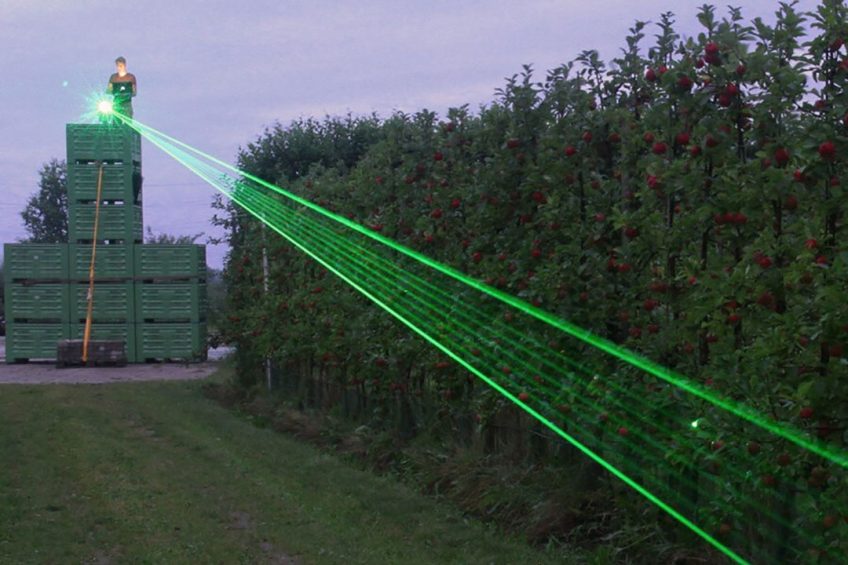The Netherlands: trial with lasers for AI prevention

Lasers are being trialled on a Dutch free-range poultry farm to see if they can remove the threat of avian influenza contamination from wild birds.
Research into the use of lasers to repel wild birds has been taking place since the 1970s, first to prevent bird strike incidents at airfields, and then to disperse wild birds causing agricultural crop damage. Dr Armin Elbers, senior epidemiologist at Wageningen University and Research, said the current study was looking to scare wild ducks and other wild birds through a laser on a platform 6 metres above ground level. Speaking at an International Egg Commission (IEC) webinar, Dr Elbers said the free range area is lasered between 5pm and 10AM, while surrounding pasture (up to 600 metres away) is lasered between 10am and 5pm.
Preliminary results:
- There are no wild birds seen during the day in the surrounding pastures with the laser in operation. The poultry farmer described the lack of geese as “stunning”.
- A lot fewer Eurasian wigeons and mallards were encountered in the large waterway at a distance of about 250m to the free-range area barn while the laser was operative.
- Grass in the surrounding pastures was much more abundant due to the lack of geese feeding.
- Without the laser, the wild ducks quickly returned to the waterway.
Dr Elbers said that after the first night, there were no mallards present once the laser was switched on. Without the use of the laser, mallards visited virtually every night.
Other measures
Other research taking place includes the use of fluorescent powders at different spots outside the poultry barn, such as concrete slabs around the barn, on the roof, in roof gutters (to mimic the AI virus attached to wild bird droppings), in order to follow the transport of the powder. Use of video camera monitoring inside and outside of the poultry barn to detect ways in which mice and rats enter the barn, as well as people and equipment, are also being used in the Netherlands to try and ensure that biosecurity measures are not breached.
 Avian influenza (AI)
Avian influenza (AI)
Find out more about the causes and effects of avian influenza and many other poultry diseases in the Poultry World health tool.
Persistent AI pressure
Eric Hubers, chairman of the Dutch Poultry Farmers Association, said Dutch farmers faced regular outbreaks of highly pathogenic bird flu, which was persistent due to the nature of the country’s topography (lots of wetlands) and the extent of free-range production. Mr Hubers said the Association was working with AVINED, the Ministry of Agriculture, Nature and Food Quality, and the Dutch Society for the Protection of Animals to reduce the risk of outbreaks. As a result, an AI roadmap has been produced with 28 recommendations for producers, covering biosecurity, monitoring and early warning signals, possibilities of vaccination, and reduction of the consequences of an introduction.
Join 31,000+ subscribers
Subscribe to our newsletter to stay updated about all the need-to-know content in the poultry sector, three times a week. Beheer
Beheer











 WP Admin
WP Admin  Bewerk bericht
Bewerk bericht